BY CINDY GERLACH
That’s the message made loud and clear by the many cultural and welcome centers in the Greater Lafayette-West Lafayette community. You are welcome, and your culture is celebrated. One thing that every group makes known: These centers are not limited to the group whose name is used in the title. Each is open and inclusive — anyone is welcome to drop by and take part in activities.
Asian American and Asian Resource & Cultural Center
905 Fifth St., West Lafayette
Purdue.edu/aaarcc

The Asian American and Asian Resource and Cultural Center opened in 2015, with the goal of providing educational and cultural resources for Purdue, as well as for the Lafayette-West Lafayette community.
Programs are in place to help provide academic support to students, with academic outreach being one of the core goals of the center. A number of courses and minors are available to students who want to pursue further study.
The center partners with other organizations across campus to sponsor programming, including speakers, movies, cultural events and panel discussions.
A number of organizations are open to students, with academic, cultural or social missions, all related to Asian cultures.

Black Cultural Center
100 Third St., West Lafayette
purdue.edu/BCC
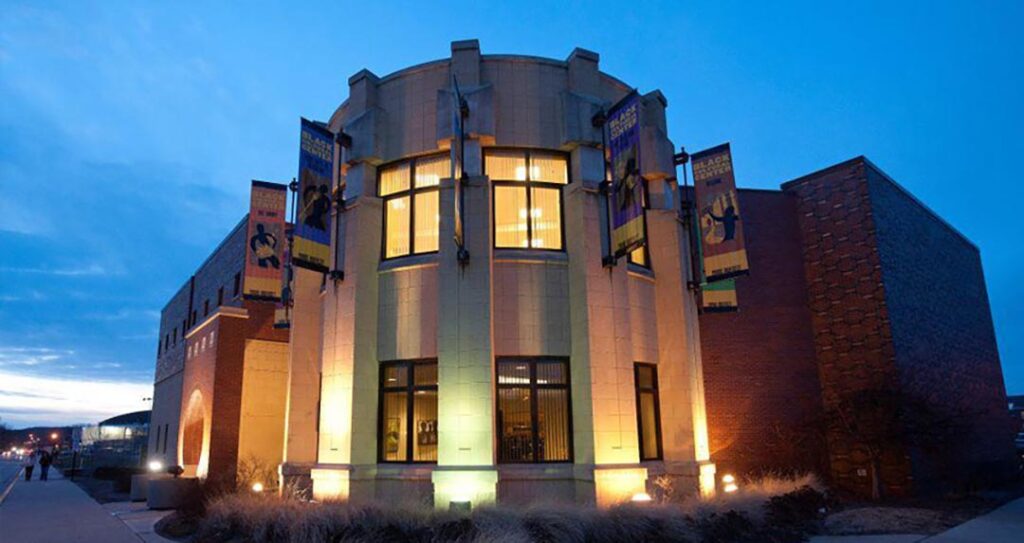
Born during the tumult of the late 1960s, Purdue’s Black Cultural Center provides a place where the entire community can be educated and enlightened about the African-American experience.
The building is designed to reflect much of that experience. Many of the design elements reflect parts of African-American culture, from the portal entrance — symbolizing the entrance to African villages — to the layout of the building, which incorporates metaphors related to these same villages. The lobby is open, encouraging community rather than exclusion. And an upper wrought-iron balcony railing represents enslaved Africans of the 1700s, who often worked in metal trades and blacksmithing, says Director Renee Thomas.

The center provides a community for all Purdue and community members who have an interest in this culture. Of particular note are the performing arts groups that are part of the BCC, including:
- Black Thought Collective: A dialogue-centered service learning group that provides an Afrocentric perspective, fostering intellectual enlightenment and educational opportunities
- Black Voices of Inspiration: A choral ensemble that performs spirituals to gospel and contemporary music
- Haraka Writers: A group of student writers, sharing the literary expression of the African-American community through short stories, essays and poetry
- Jahari Dance Troupe: A student dance company that traces the history of Black Dance in America
- New Directional Players: The student theatrical company that performs thought-provoking drama about the African-American experience
- Purdue Express: A 30-minute stage production about life at Purdue.
The BCC features a library, a computer room and space for students to gather and be social. And its location between the academic center of campus and the residence halls makes it a convenient stop for students.
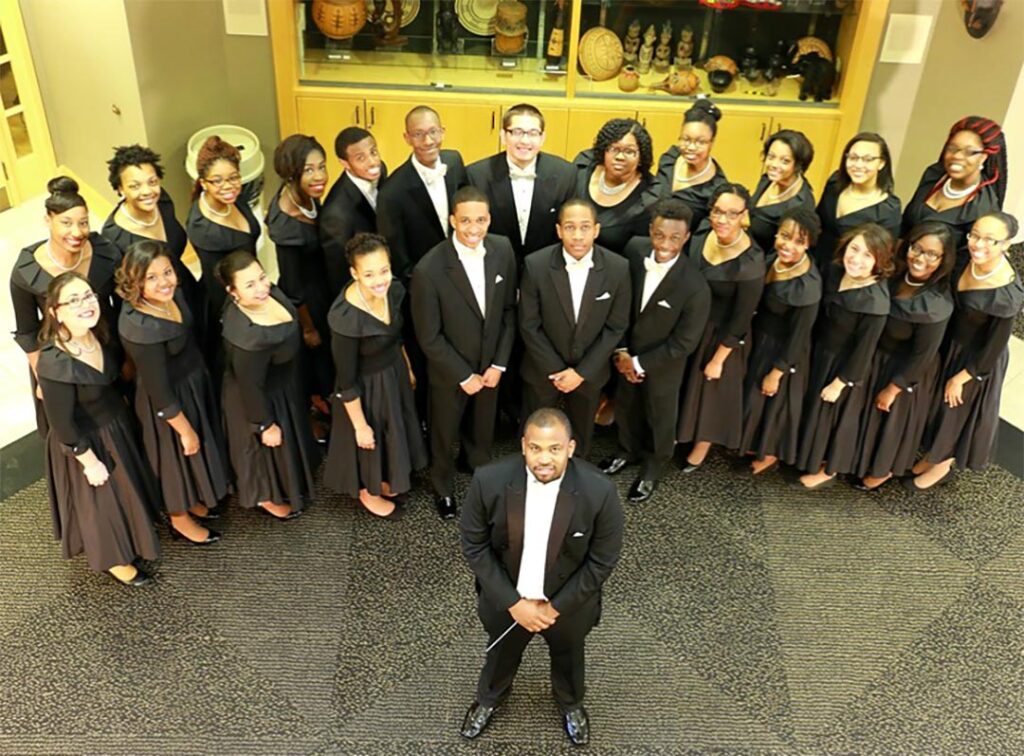
“Students who have a greater sense of belonging have stronger retention rates,” Thomas says. “We try to engage them through our programming and our performing arts ensembles.”
The BCC has two very distinct personalities. There’s the standard workday atmosphere between 8 a.m. and 5 p.m., when it feels like an academic department. But in the evenings, the place comes alive with a vibrant, social vibe as students take over.
“Lots of students take advantage,” says Thomas. “They really see it as their space as well.”
International Center of West Lafayette
523 N. Russell St., West Lafayette
Intlctr.org
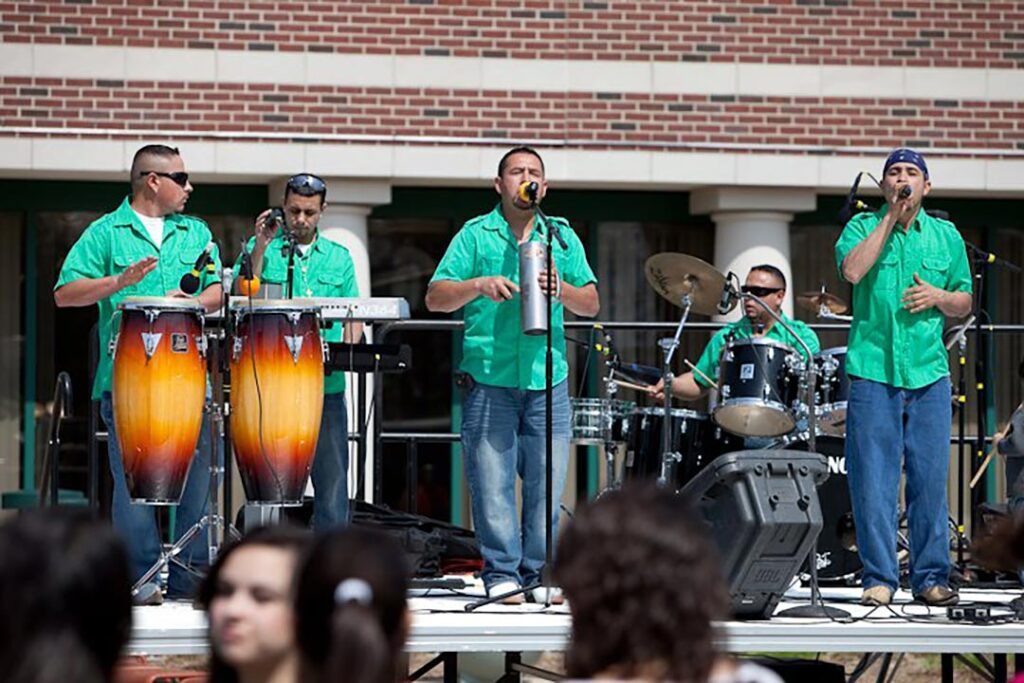
The International Center focuses on education about various cultures. It offers a variety of foreign language classes and conversation groups in English, which is helpful for newcomers to the United States, says Executive Director Soo Shin.
“They love coming here so they can practice English with people with so many different accents,” she says.
People come to attend language classes for a variety of reasons, from faculty planning to spend time overseas to people planning travel for leisure. The classes also focus on the cultural component and travel essentials.
English as a Second Language classes also are offered, a popular option for newcomers to the area.
Throughout the year, various social activities are held at the center. On Fridays, the Global Café is a free program featuring a speaker on a particular location. Sometimes they focus on life in the United States — how to foster pets, the rules on gun ownership — and other speakers focus on life and the culture in another country.
“People want to hear the other side of the news they never hear about,” Shin says. “It’s so good to break those stereotypes.”
The International Center is proud to host the food bazaar at Global Fest each year, featuring cuisine from nearly 25 different countries.
“When you enter this building, you get rid of the stereotypes and get to see what the real person is like,” Shin says. “This place has been a safe space regardless of where they are from. It’s amazing how word of mouth works; students go back to their home countries and spread the word.”
Latino Center for Wellness & Education
Northend Community Center, Lafayette
Latinocenter.orgspring.org
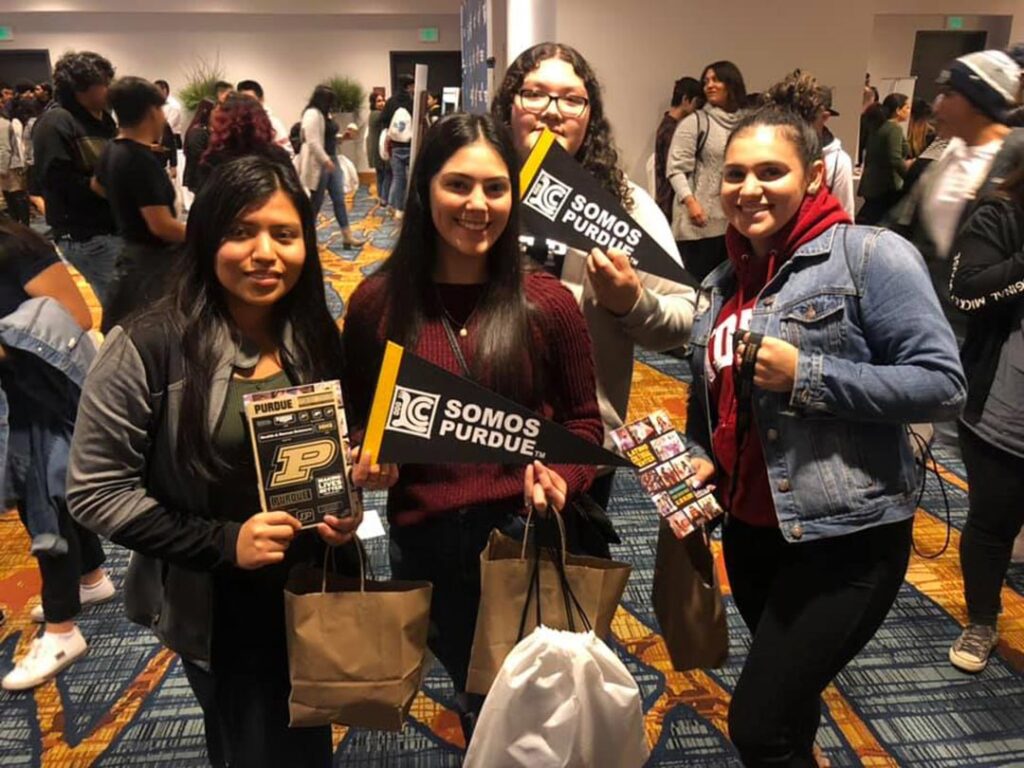
The Latino Center for Wellness and Education was organized to help integrate the Latino culture into the community.
“We’re promoting our culture and want to highlight our culture,” says board president Cassandra Salazar. “We want to integrate cultures. That’s part of our mission.”
The group’s largest activity of the year is the Tippecanoe Latino Festival each fall. It also features a community resource fair, whose participants include schools, churches, businesses, arts and culture, groups like Greater Lafayette Immigrant Allies and the Mexican consulate.
The event is the group’s largest fundraiser as well, providing support for its other outreach throughout the year.
But Salazar is quick to point out that the organization is not Mexican-centric — all Latino cultures are represented, with board members from all over Latin America.
The center provides resources and assistance to people, including academic scholarships, translation services (including providing translators at school events), referrals for those new to the community (doctors, lawyers, mortgage lenders), and other need-based services.
In December, a large holiday celebration is held, with activities, crafts and gifts for children. In April, Día de Niño is celebrated, a national holiday in many Latin American countries. Literacy is often a focus, with all children going home with a book.
“All of our events are 100 percent free to the community,” Salazar says. “That’s something we strongly believe in. We just want to serve as a resource.”
Latino Cultural Center
426 Waldron St., West Lafayette
purdue.edu/LCC
A welcoming and inclusive community can be found at the Latino Cultural Center, which fosters meaningful dialogue and cultural understanding of all Latinx communities.
Director Carina Olaru feels strongly about inclusion.
“One of our founding mottos is ‘All are welcome,’” she says. Which is why the center has adopted the use of the Latinx, which, while somewhat controversial, is inclusive in ways “Latino” and “Latina” are not.
“We use it here because we want to show that it’s an inclusive space.”
The center offers study space and a computer lab, a place where students can drop in. The building itself is filled with artwork and color, a visual link that clearly illustrates a tie to Latin America.
And not just Mexico, Olaru points out — the center is open to all, the campus community and the community beyond Purdue as well.
The center has a library, which is a great resource for students who are just beginning to learn about their culture and want to explore.
They have a pop-up food bank as a way to help combat food insecurity. And in back of the center is a garden, which can be a teaching tool as well as a place for relaxation.
“It allows for us to think about being mindful,” Olaru says. “Through gardening or just reading.”
The center sponsors speakers and discussions that will benefit students. Last year, for example, it partnered with the LGBTQ center on adoption of the term Latinx and all that entailed.
“What happens at the center comes from what our students and faculty needs are,” Olaru says. “We support them in how creative they want to be.”
Each fall, an open house and research fair, El Puente, welcomes students to campus. A student retreat, Conexiones, invites students to come and build community, with a variety of workshops offered.
“When people think of Latin culture they think of food, fun and fiesta,” Olaru says, “But really, we are the Latino Cultural Center, creating cultural understanding, creating a sense of belonging and creating a dialogue.”
LGBTQ Center
230 Schleman Hall, Purdue University
purdue.edu/lgbtq
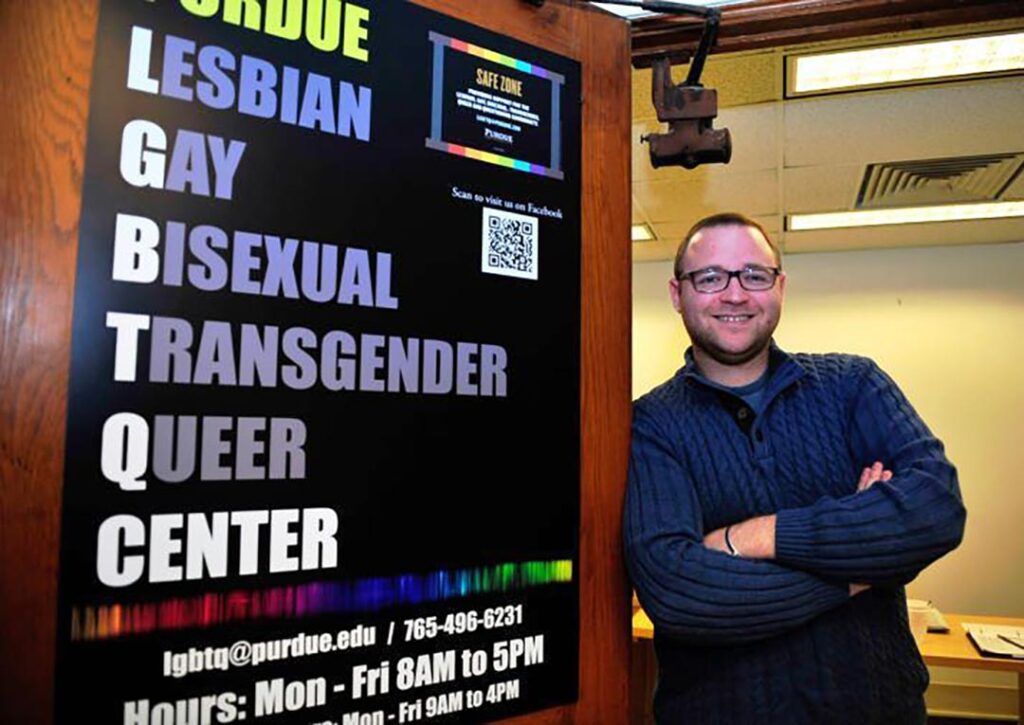
Purdue’s LGBTQ center was organized in 2012 to help support the lesbian, gay, bisexual, transgender and queer students, faculty and staff at Purdue University. Director Lowell Kane is the center’s inaugural director.
Because the center serves the LGBTQ community, it crosses over into all disciplines, all cultures and all walks of life, Kane says.
“We try to show the intersectionality of the community, which is a very diverse group,” Kane says. “Our community is every community. We really are this incredibly diverse population.”
The center is open during the day, offering study space, a computer lab and tutoring for students. There also is a lounge where students can just hang out.
Kane emphasizes the center’s opening and welcoming atmosphere. There is a collection of artifacts on display, illustrating the history and struggles of the LGBTQ community.
The ultimate goal of the center is to help students be successful. The center works toward educating the university on how to create an inclusive campus environment, offering training to faculty and staff. This has created a “safe zone” network across campus, so students can find allies who will offer support.

And because students can confidentially identify as part of the LGBTQ community with their enrollment — and can change that designation at any time — the center has access to a database of grades and demographic trends, seeing where their students most need academic support.
Each fall, the Rainbow Callout is a resource fair for students; it has grown from nine tables in a room at the Stewart Center the first year to filling the Union ballrooms, with more than 1,300 attendees.
And each spring the center offers a Lavender Graduation, which includes about 60 graduates, from undergraduate all the way up through doctoral students.
“It’s very nice, coming together to celebrate the achievements of the community,” Kane says.
The center partners with various groups across campus to sponsor educational programming throughout the year. Last year, it partnered with Convos in bringing the Tony-award winning musical “Rent” to campus. And through a partnership with the College of Liberal Arts and Women and Gender studies, it brought a visiting scholar to campus, Sasha Velour from “Ru Paul’s Drag Race.” She uses her platform to advocate for social justice causes, particularly for LGBTQ women’s rights, race/ethnicity and international issues.
Native American Education & Cultural Center
903 Fifth St., West Lafayette
purdue.edu/naecc

The Native American Cultural Center is home to Native American, Alaskan Native and Hawaiian students, faculty and staff, with more than 60 tribal nations represented.
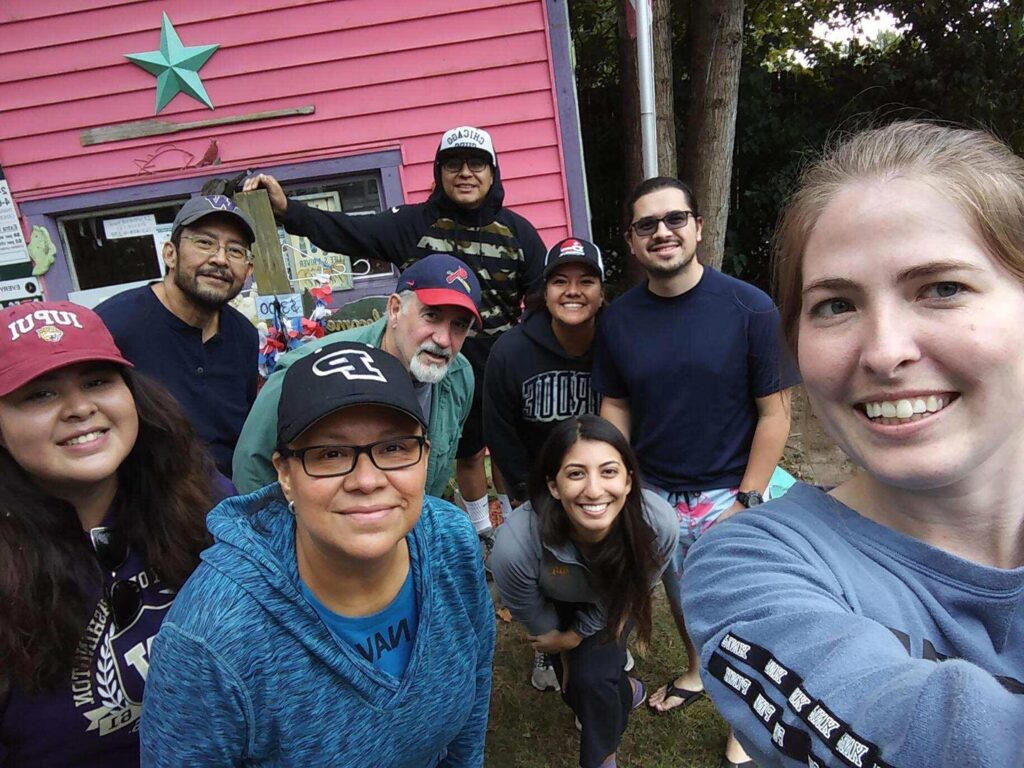
The center is focused on providing academic support in order to foster student success. It also provides educational outreach about the United States’ indigenous cultures.
Throughout the year, a variety of programs are sponsored by the center. An open house kicks off the year, with tours of the center and a preview of the fall’s events. Students also are introduced to the various student organizations they can join that relate to their culture.
Various programs are scheduled throughout the year, including film screenings and discussions, visiting artists and historical discussions.

Aloha Fridays are a popular event; on the Hawaiian Islands, it’s a farewell to the work week, and here, programming varies, from food to discussion to arts and crafts.
Throughout November, Native American Heritage Month, the center sponsors a number of speakers on history, culture and education.
Pride Lafayette
640 Main St., Lafayette
Pridelafayette.org
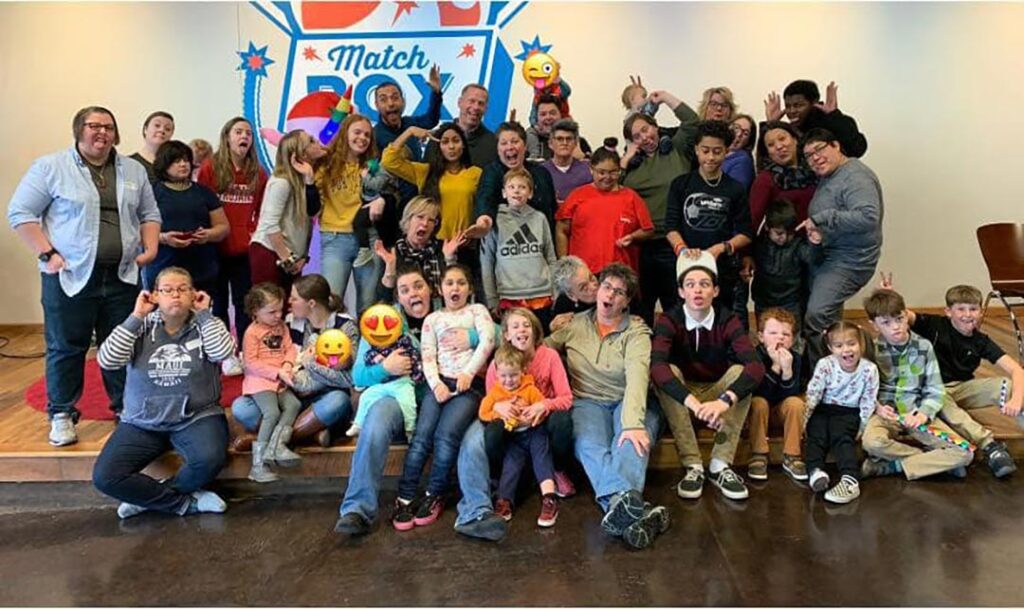
Pride Lafayette was organized 16 years ago to serve members of the gay, lesbian, bisexual, transgender and queer community and its allies. The oldest advocacy group in the state of Indiana, says board president Ashley Smith, it hosts a variety of activities and speakers to help support its constituency.
At its downtown Lafayette location, it hosts a variety of different activities, from support groups for teens or family members, to game and movie nights.
The center is designed to provide flexibility: screens can be moved and arranged to provide privacy to support groups meeting inside; a back door is available for those who want to drop in but need or want to protect their identity as they enter — “Some people just aren’t ready to be out,” says Smith. “We respect their privacy.”
Pride’s biggest and best-known event is its annual OUTfest, a festival that takes over downtown Lafayette each August. It started in 2008 as OUT-oberfest, but over the last 10 years, the event has grown and now features food, music, resources, more than 70 vendors and family-friendly activities. Several local churches and area politicians can be counted as supporters, including the mayors of both Lafayette and West Lafayette. The event always ends in a spectacular drag show; last year’s event included a Freddie Mercury tribute.
Each November, Pride hosts a family weekend, coinciding with other Family Equality events. Families come from all the state to attend.


